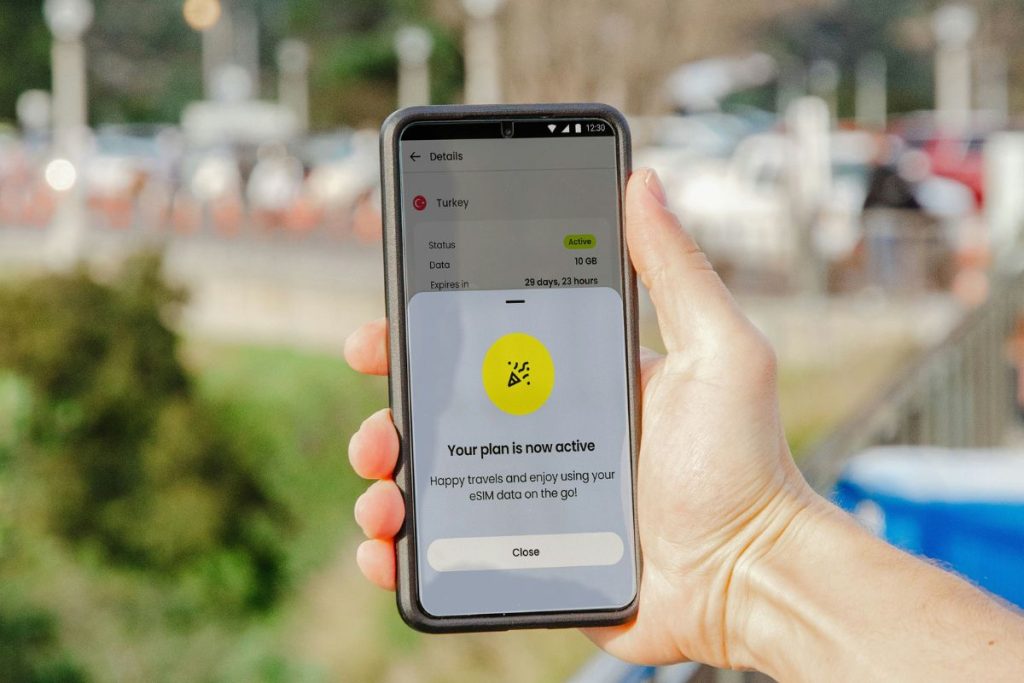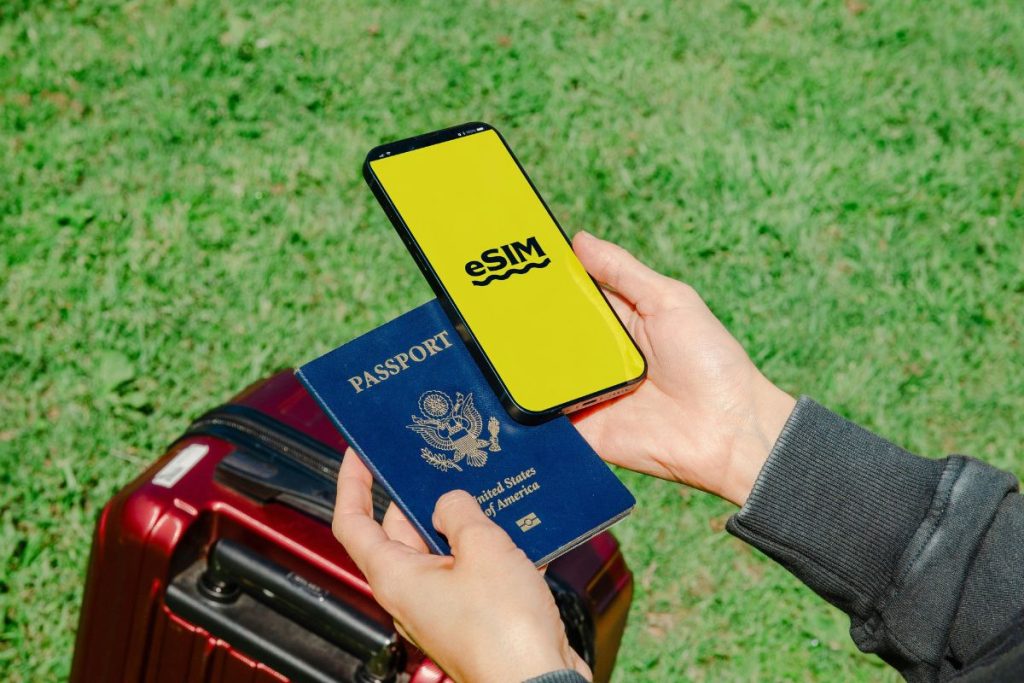Canada welcomes millions of international visitors every year, drawn by its stunning landscapes, vibrant cities, and outdoor adventures. But staying connected while exploring this vast country can quickly become expensive and frustrating. Whether you’re navigating Toronto’s subway system, checking trail conditions in Banff, or finding the best poutine spot in Montreal, reliable internet access isn’t just convenient—it’s essential.
Traditional roaming charges can drain your budget faster than a winter storm hits the prairies. Local SIM cards require hunting down phone shops, dealing with language barriers, and swapping tiny pieces of plastic that you’ll probably lose. That’s where eSIM technology changes everything for modern travellers heading to Canada.
Why Connectivity Matters for Travellers in Canada
Planning a Canadian adventure means juggling reservations, transportation apps, translation tools, and real-time information. Unlike compact European cities where you might manage with offline maps, Canada’s sheer size demands constant connectivity. A wrong turn in the countryside could add hours to your journey, and many attractions require advance bookings that you’ll access digitally.
The Challenges of Staying Connected Abroad

International travellers face several connectivity nightmares when landing in Canada. Your home carrier’s roaming fees can reach $10-15 per day, turning a two-week vacation into a $200 phone bill before you’ve even taken a photo. Public Wi-Fi at coffee shops and hotels seems convenient until you need directions between locations or want to video call family from Niagara Falls.
Buying a physical SIM card at the airport sounds straightforward but often means waiting in line, providing identification, and hoping your unlocked phone actually works with Canadian networks. Many travellers discover their phone is locked only after landing, or they struggle with activation instructions in a new country. Rural areas compound these problems—that scenic drive to the Rockies becomes stressful when you lose signal and can’t access navigation or emergency services.
How eSIMs Simplify Travel Connectivity
eSIM technology eliminates physical SIM cards entirely. This embedded chip in your smartphone activates digitally, meaning you can purchase and install a canada e sim plan before leaving home. Within minutes, you’ll have a Canadian phone number and data plan ready to work the moment your plane touches down in Vancouver or Toronto.
The process is straightforward: buy a plan online, scan a QR code, and your phone connects to Canadian networks automatically. No airport kiosks, no tiny SIM card trays, and no activation headaches. You can keep your home number active for important calls while using Canadian data for everything else. If you run low on data mid-trip, topping up takes seconds through an app—no hunting for convenience stores or navigating foreign customer service lines.
Vancouver: Seamless Urban and Outdoor Connectivity
Vancouver sits between ocean and mountains, offering travellers an unusual mix of sophisticated city life and wilderness access within the same day. This geographic diversity creates unique connectivity needs that make reliable data essential from the moment you arrive at YVR airport.
Navigating Vancouver’s Vibrant Cityscape

Vancouver’s public transit system connects downtown to neighbourhoods like Commercial Drive, Kitsilano, and the North Shore through buses, SkyTrain, and SeaBus routes. Real-time transit apps become your lifeline for avoiding delays and finding the fastest connections. Walking through Gastown’s cobblestone streets or exploring Granville Island’s market requires maps to discover hidden galleries, craft breweries, and waterfront restaurants that locals recommend.
Stanley Park spans 1,000 acres with numerous trails, beaches, and viewpoints. Without data, you might miss the seawall’s best photo spots or struggle to find specific totem poles and gardens. Ride-sharing apps help travellers move between neighbourhoods efficiently, especially when Vancouver’s frequent rain makes walking less appealing. Restaurant reservations often require online bookings, and many popular spots post wait times or menu changes through social media channels you’ll need data to access.
Staying Online in Vancouver’s Surrounding Nature
Whistler sits two hours north of Vancouver, while the North Shore mountains offer hiking, skiing, and mountain biking minutes from downtown. These areas present connectivity challenges where eSIMs prove their worth. Trail conditions change rapidly with weather, and having current information prevents dangerous situations. The Sea-to-Sky Highway between Vancouver and Whistler features stunning viewpoints, but you’ll need navigation to find pullouts and avoid missing attractions like Shannon Falls.
Mountain safety depends on connectivity. If weather turns or someone gets injured on a trail, accessing emergency services or checking conditions becomes critical. Many hikers use GPS tracking apps to share their location with family, providing peace of mind during backcountry adventures. Ski resorts post avalanche warnings, lift status, and weather updates digitally—information that can change your plans and keep you safe.
Toronto: Fast-Paced City, Fast Data Needs
Toronto operates at a different speed than most Canadian cities. As the country’s business capital and largest metropolitan area, this city demands constant connectivity for both work travellers and tourists trying to experience everything from the CN Tower to hidden neighbourhood gems in Kensington Market.
Managing Business and Leisure in Toronto
Business travellers need reliable video conferencing, email access, and cloud document syncing while moving between meetings across the city. Toronto’s Financial District, Entertainment District, and various business parks spread across the Greater Toronto Area mean professionals can’t rely on spotty hotel Wi-Fi. Conference calls from coffee shops or co-working spaces require strong, dependable data connections.
Tourists face equally intense connectivity needs. The CN Tower, Ripley’s Aquarium, St. Lawrence Market, and Toronto Islands all require planning, tickets, and navigation. Restaurant reservations in popular neighbourhoods like Yorkville or Queen West often happen through apps like OpenTable, and many spots don’t take walk-ins. Toronto’s PATH system—an underground network connecting downtown buildings—can confuse first-time visitors who need maps to navigate its 30 kilometers of shopping and dining options without surfacing into winter cold.
Cultural events happen constantly. Checking schedules for the Royal Ontario Museum, Art Gallery of Ontario, or catching a Blue Jays game at Rogers Centre means accessing real-time information. Toronto’s diverse neighbourhoods each offer unique experiences, but finding authentic dim sum in Chinatown or the best butter chicken in Little India requires reviews, directions, and often translation help for menu items.
eSIM Benefits for Toronto’s Busy Travellers
Toronto’s density and pace make dropped signals or slow data speeds particularly frustrating. eSIMs connect to major Canadian carriers’ networks, providing the same high-speed LTE and 5G access that locals enjoy. Unlike limiting your data usage to avoid roaming charges, eSIM plans let you use navigation, streaming, and communication freely without watching every megabyte.
Flexible plan options match Toronto’s varied visitor needs. A business traveller staying a week needs different data volumes than someone passing through for a weekend. The ability to adjust plans mid-trip means you won’t overpay for unused data or face expensive overage charges. If your Toronto visit extends unexpectedly or you decide to explore more of Ontario, adding data takes minutes rather than requiring new SIM cards or contract modifications.
Montreal: Blending Culture with Connectivity
Montreal offers travellers a distinct European flavour within North America, where French language and culture dominate daily life. This linguistic difference makes connectivity even more valuable for international visitors navigating a bilingual city with its own unique character and customs.
Exploring Montreal’s Multicultural Hub


French is Montreal’s primary language, though most tourism areas offer English support. Translation apps become essential when reading menus in authentic bistros, understanding museum exhibits, or communicating in neighbourhoods where English is less common. Real-time translation makes the difference between ordering confidently and pointing awkwardly at pictures.
Montreal’s festival calendar runs year-round, from Jazz Fest to Just for Laughs comedy festival. Event schedules, ticket information, and venue locations all require digital access. Old Montreal’s narrow streets and historic buildings create a charming atmosphere but can confuse navigation apps, making reliable data crucial for finding your hotel or specific restaurants along cobblestone alleys.
The city’s food scene ranks among North America’s best, with bagel shops, smoked meat delis, and innovative restaurants spread across neighbourhoods like the Plateau, Mile End, and downtown. Food bloggers and review sites help travellers find authentic experiences rather than tourist traps. Montreal’s metro system efficiently connects areas, but understanding French station names and route maps is easier with digital assistance.
Similar to how travellers might research an esim for europe travel to handle multiple countries, Montreal’s blend of North American and European influences requires connectivity solutions that work seamlessly across cultural boundaries. Having reliable data helps you shift between French and English environments without missing important information or getting lost.
Why eSIMs Are Perfect for Montreal’s Dynamic Vibe
Montreal attracts visitors who value culture, food, and nightlife—activities that spontaneously shift throughout the day. You might plan to visit Mount Royal in the afternoon but discover a pop-up market or street festival worth exploring instead. This flexibility requires constant connectivity to check options, compare reviews, and navigate to new locations without returning to your hotel for Wi-Fi.

eSIMs offer cost-effective data compared to international roaming, letting you use your phone freely for photos, social media, and staying in touch with travel companions who might split up to explore different neighbourhoods. Montreal’s creative energy encourages wandering, but getting lost in the Plateau is only fun when you can quickly orient yourself and find that recommended bagel shop everyone mentions.
Network switching capability helps when buildings or underground venues have varying signal strength. eSIM technology automatically selects the strongest available network, preventing connectivity drops when you’re underground in the metro or inside historic stone buildings that block signals. For travellers combining Montreal with other Quebec destinations or exploring an esim for uk and europe before heading to Canada, this seamless technology matches the multi-destination nature of modern travel.
Calgary: Gateway to the Rockies
Calgary serves as the launching point for Canadian Rockies adventures while offering its own blend of western heritage and modern urban development. Travelers here juggle city exploration with planning mountain excursions, creating dual connectivity needs that traditional SIM cards struggle to address efficiently.
Connectivity for Urban and Outdoor Adventures
Downtown Calgary features the Calgary Tower, Glenbow Museum, and Stephen Avenue Walk with shops and restaurants. The annual Calgary Stampede draws massive crowds in July, requiring advance planning for accommodation, events, and navigating traffic changes. Real-time updates help travellers adjust plans as downtown fills with rodeo visitors and festival activities.

Most Calgary visitors treat the city as a base camp for Banff National Park, Lake Louise, and Jasper. These destinations sit 1-3 hours away, requiring navigation through mountain highways where conditions change rapidly. Checking weather forecasts, road closures, and trail conditions before leaving Calgary prevents wasted trips when storms roll through or attractions close unexpectedly.
Banff townsite offers restaurants, shops, and hotels, but the real draw is surrounding nature. Hot springs, hiking trails, and wildlife viewing locations spread throughout the park. Without connectivity, you might miss sunrise at Moraine Lake because you didn’t know the road closes when parking lots fill. Wildlife safety information—like bear activity reports—gets posted online, helping hikers choose safe trails.
eSIMs for Flexible Travel Plans
Calgary trips vary dramatically in length and focus. Some travellers spend a few days before heading to mountain resorts, while others use the city as a home base for two weeks of daily excursions. Traditional SIM cards lock you into preset plans that might not match your actual usage, leaving you paying for unused data or scrambling to add more.
eSIMs let you start with moderate data for Calgary urban exploration, then add capacity when you realize you’ll be uploading mountain photos or streaming music during long drives. This flexibility prevents both overpaying and running out of data at crucial moments. If weather forces you to spend extra days in Calgary or you decide to extend your Banff stay, adjusting your eSIM plan takes seconds rather than requiring store visits or customer service calls.
Remote areas test network coverage limits. While Canadian carriers generally maintain good highway coverage, some mountain valleys and backcountry roads have gaps. eSIMs that connect to multiple carriers automatically switch to available networks, maximizing your chances of maintaining signal. This proves critical when checking road conditions on the Trans-Canada Highway or notifying accommodations about delayed arrival times.
Quebec City: Historic Charm Meets Modern Connectivity
Quebec City feels like stepping into Europe without crossing the Atlantic. Its 400-year-old fortified walls, French colonial architecture, and cobblestone streets create an atmosphere unlike any other North American city. However, this historic charm presents modern connectivity challenges that travellers must address.
Staying Connected in a Historic Destination
Old Quebec’s thick stone walls and narrow streets create signal challenges that modern phones handle poorly without strong carrier connections. Small boutique hotels and bed-and-breakfasts often lack reliable Wi-Fi, especially in heritage buildings where installing modern infrastructure proves difficult. Free public Wi-Fi exists in major squares but disappears once you wander into quieter streets and alleys where the best shops and restaurants hide.

Navigation becomes essential in Old Quebec’s maze of similar-looking streets that wind unexpectedly. Street signs appear in French, and locals may not speak English fluently. Having constant access to maps prevents frustrating circles through the same areas while trying to find Château Frontenac or specific restaurants along Rue Saint-Jean.
Montmorency Falls and Île d’Orléans make popular day trips from Quebec City, both requiring transportation coordination and timing. Ferry schedules, bus routes, and attraction hours change seasonally, making real-time information crucial. Winter visitors need up-to-date weather information as Quebec City experiences harsh conditions that can close attractions or make certain areas dangerous.
How eSIMs Enhance the Quebec City Experience
Quebec City rewards spontaneous exploration. You’ll discover hidden courtyards, small museums, and local artisan shops that don’t appear in guidebooks. Having reliable data means you can research opening hours, read reviews, or translate information without returning to your hotel. Many restaurants don’t take reservations, so checking wait times or finding alternatives nearby requires connectivity.
The city hosts numerous festivals and cultural events year-round, from Winter Carnival to New France Festival. Event schedules, locations, and ticket purchasing happen digitally. Street performers, temporary exhibitions, and seasonal markets pop up regularly—discovering them requires following local social media or tourism sites that update frequently.
Photography opportunities abound in Quebec City’s picturesque settings. Uploading photos, checking angles other travellers have captured, or sharing experiences in real-time adds enjoyment for many visitors. Rather than limiting yourself to hotel Wi-Fi uploads at day’s end, eSIM data lets you share moments as they happen and stay connected with travel companions exploring different areas of this compact but layered city.
Simify: Your Trusted Partner for Effortless Connectivity in Canada
Choosing an eSIM provider requires evaluating coverage, costs, customer support, and activation simplicity. Simify has built its reputation on addressing exactly the pain points travellers face when trying to stay connected abroad without the traditional hassles.
Why Simify Stands Out for Travellers
Simify offers straightforward pricing without hidden fees that surprise you after purchase. Plans clearly state data amounts, validity periods, and coverage areas before you buy. This transparency helps travellers budget accurately rather than discovering unexpected charges mid-trip. The provider maintains partnerships with major Canadian carriers, ensuring strong signals in cities, highways, and even many rural areas where smaller networks struggle.
Device compatibility concerns often deter travellers from trying eSIM technology. Simify’s website includes compatibility checkers that verify whether your specific phone model supports eSIMs before purchase. The activation process uses simple QR code scanning with step-by-step instructions in multiple languages, removing technical barriers that make people hesitate about digital SIM technology.
Customer support operates across time zones, helping travellers activate plans, troubleshoot issues, or add data regardless of when they encounter problems. Unlike physical SIM vendors who disappear after sale, Simify’s digital support remains accessible throughout your trip. The mobile app lets you monitor data usage, purchase top-ups, and manage multiple eSIM profiles if you’re traveling to several countries.
How Simify Solves Common Traveller Pain Points
High costs plague international travel connectivity. Simify’s competitive pricing beats roaming charges substantially—often saving 60-80% compared to using your home carrier. Plans scale from light users who mainly need navigation and messaging to heavy users streaming content and conducting video calls. This flexibility prevents overpaying for capacity you won’t use while ensuring options exist for data-intensive activities.
Complex setups frustrate travellers already dealing with jet lag and new environments. Simify eliminates pre-trip store visits, post-arrival SIM hunting, and language barrier issues. You purchase online, install from home, and activate upon arrival—the entire process completes in minutes rather than hours of airport time. If issues arise, support teams familiar with your specific device and plan can troubleshoot remotely without requiring physical store visits.
Limited coverage creates anxiety when traveling to remote areas or smaller cities. Simify’s network partnerships provide broader coverage than relying on single carriers. Whether you’re exploring Newfoundland’s coastlines, visiting Regina’s prairies, or skiing in interior British Columbia, Simify maintains connectivity in more locations than typical tourist-focused SIM vendors who concentrate on major airports and cities.
Tips for Choosing the Right eSIM for Your Canadian Trip

Selecting an eSIM plan requires understanding your travel style, data habits, and device capabilities. Making informed decisions prevents both overspending and running out of data when you need it most.
Assessing Your Data Needs
Light users who primarily need Google Maps, messaging apps, and occasional browsing can manage with 3-5GB for a week-long trip. Medium users adding social media photo uploads, frequent restaurant research, and video calls should consider 8-12GB. Heavy users streaming music during road trips, backing up photos to cloud storage, or working remotely need 20GB or unlimited plans.
Calculate data based on activities. Navigation uses roughly 5MB per hour. Social media scrolling consumes 100MB per hour. Video calling burns through 270MB per hour. Streaming music or podcasts runs about 60MB per hour at standard quality. A typical day of moderate use—two hours navigation, one hour social media, thirty minutes video calling—totals approximately 500MB. Multiply by your trip length and add 20% buffer for unexpected usage.
Consider whether your accommodation offers Wi-Fi for heavy tasks like uploading full-resolution photos or video chatting with family. Using hotel Wi-Fi for bandwidth-intensive activities while saving cellular data for on-the-go needs extends your plan significantly. Downloading offline maps, music playlists, and entertainment before leaving your hotel each morning reduces daily data consumption dramatically.
Checking Device Compatibility
Most iPhones from XS/XR models onward support eSIM technology. Android compatibility varies by manufacturer and model—Samsung Galaxy S20 and newer, Google Pixel 3 and newer, and most recent flagship devices include eSIM capability. According to the Canadian government’s travel resources, it’s important to verify specific features before international trips to avoid connectivity issues.
Check your device settings by navigating to mobile network options and looking for “Add eSIM” or “Add cellular plan” functions. If these options exist, your phone supports eSIM. Ensure your device is carrier-unlocked—phones purchased through carrier contracts often include locks preventing international eSIM use. Contact your home carrier to confirm unlock status or request unlocking before traveling.
Install eSIM profiles before departure when possible. While you can purchase and install eSIMs after arriving in Canada, setting everything up at home using reliable Wi-Fi eliminates stress and ensures everything works correctly. Test your eSIM by temporarily enabling it before leaving—you won’t consume data or incur charges until actually connecting to Canadian networks, but you’ll confirm proper installation.
Conclusion: Travel Canada with Confidence Using eSIMs

Canada’s incredible diversity—from maritime provinces to Arctic territories, metropolitan centers to wilderness parks—creates countless travel possibilities. Whether you’re photographing Vancouver’s cherry blossoms, attending Montreal’s festivals, conducting business in Toronto, exploring Calgary’s cowboy culture, or wandering Quebec City’s historic streets, staying connected enhances every experience while providing crucial safety and convenience.
eSIM technology eliminates the traditional barriers of international travel connectivity. No more airport SIM card hunts, no more shocking roaming bills, no more choosing between staying connected and staying within budget. Digital activation, flexible plans, and instant top-ups match how modern travellers actually move through the world—spontaneously, efficiently, and expecting technology to work seamlessly.
The five cities covered here represent Canada’s must-visit destinations, each offering unique attractions and connectivity challenges that eSIMs elegantly solve. From urban exploration to mountain adventures, cultural immersion to business efficiency, having reliable data transforms travel from stressful navigation to confident discovery. Start planning your Canadian adventure knowing that staying connected will be the easiest part of your trip.
FAQs About Using eSIMs in Canada
How do I know if my phone supports eSIM for Canada travel?
Check your phone’s settings under mobile network or cellular options. Look for “Add eSIM,” “Add cellular plan,” or similar language. iPhones XS/XR and newer support eSIM. Most flagship Android phones from 2019 onward include eSIM capability, including Samsung Galaxy S20+, Google Pixel 3+, and recent Huawei and Motorola flagships. Verify your specific model on your manufacturer’s website. Your phone must also be carrier-unlocked—contact your home provider to confirm or request unlocking if needed. Some carriers lock devices to prevent international use even if the hardware supports eSIM.
Are eSIMs more cost-effective than traditional SIM cards in Canada?
Yes, eSIMs typically cost 60-80% less than international roaming charges. A typical Canadian roaming plan through major carriers costs $10-15 daily, totaling $140-210 for two weeks. eSIM plans offering similar data run $25-50 for the same period. Compared to airport SIM cards, eSIMs cost similarly but eliminate airport time, language barriers, and activation headaches. Local SIM cards sometimes offer competitive pricing but require unlocked phones, airport or store visits, identification, and physical SIM management. For trips under three weeks, eSIMs provide the best value-to-convenience ratio.
Can I use an eSIM in Canada’s rural or remote areas?
eSIM coverage depends on underlying carrier networks. Major Canadian providers maintain strong highway and populated area coverage but have gaps in true wilderness regions like northern territories or remote national park backcountry. eSIM providers partnering with multiple carriers offer better coverage than single-network SIMs because your device automatically switches to available networks. Expect reliable connectivity on major highways, in towns, and around tourist destinations like Banff or Whistler. Deep backcountry trails, remote lakes, and far northern regions may have limited or no coverage regardless of provider. Check coverage maps for specific routes and download offline maps before entering questionable areas.
How quickly can I activate an eSIM for my trip to Canada?
Purchase and activation takes 5-10 minutes. Buy your plan online, receive a QR code via email, and scan it using your phone’s camera or eSIM management settings. The profile installs immediately, though it won’t connect to Canadian networks until you arrive and manually enable it. Many travelers install eSIMs before departure, then simply toggle them on after landing. If purchasing after arrival, you need Wi-Fi for the initial download—airport Wi-Fi works fine. Some providers offer instant QR codes while others send them within hours. Plan ahead by purchasing at least 24 hours before departure to avoid last-minute issues.
What happens if I run out of data on my eSIM in Canada?
Most eSIM providers, including Simify, offer instant top-ups through mobile apps or websites. When you approach your data limit, you’ll receive notifications. Purchase additional data packages—usually in 1GB, 5GB, or 10GB increments—that activate within minutes. No need to find stores or interrupt your activities. Prices for top-ups often match initial plan rates, avoiding the expensive overage charges that traditional carriers impose. Some plans offer unlimited data with speed throttling after limits, meaning you stay connected at reduced speeds rather than losing service entirely. Check your provider’s top-up options and keep a payment method saved in their app for seamless additions when needed.
Images courtesy of unsplash.com and pexels.com











